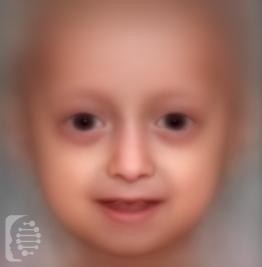What is Hutchinson-Gilford Progeria syndrome (HGPS)?
Hutchinson-Gilford Progeria syndrome is a rare fatal genetic condition named after the doctors who first identified it, in 1886 and 1897 respectively.
The syndrome triggers accelerated aging in those affected. Heart disease is also a serious and common complication of the rare disease.
Syndrome Synonyms:
HGPS Hutchinson-Gilford syndrome; Progeria; Progeria Syndrome, Childhood-onset, with Osteolysis; PSCOO
What gene change causes Hutchinson-Gilford Progeria syndrome (HGPS)?
Mutations on the LMNA, gene are responsible for the syndrome. However, other forms of progeria in genes POLR3A, TOMM7, and BANF1 should be considered.
These genes produce Lamin A, now known to be what holds the nucleus of a cell together. A mutation in the genes leads to a lack of Lamin A, which creates an unstable nucleus and triggers premature aging.
In the case of autosomal dominant inheritance, just one parent is the carrier of the gene mutation, and they have a 50% chance of passing it onto each of their children. Syndromes inherited in an autosomal dominant inheritance are caused by just one copy of the gene mutation.
In some cases, a genetic syndrome may be the result of a de-novo mutation and the first case in a family. In this case, this is a new gene mutation which occurs during the reproductive process.
What are the main symptoms of Hutchinson-Gilford Progeria syndrome (HGPS)?
Symptoms of premature aging generally occur in the first two years of an affected individual’s life. These symptoms include slowed growth, a loss of body fat and hair, hip dislocations, increased stiffness in the joints as well as the more serious medical conditions of heart disease and stroke.
The condition is fatal, and the expected life expectancy for someone with the syndrome is just 14 years. Heart disease is the leading cause of death for someone with this condition.
Possible clinical traits/features:
Progressive clavicular acroosteolysis, Sparse eyelashes, Osteolytic defects of the distal phalanges of the hand, Osteoporosis, Autosomal recessive inheritance, Short stature, Lipoatrophy, Joint stiffness, Micrognathia, Spotty hyperpigmentation, Midface retrusion, Proptosis, Sparse and thin eyebrow, Scoliosis, Pulmonary arterial hypertension, Sinus tachycardia, Wide cranial sutures, Atherosclerosis, Abnormality of the ribs, Abnormality of the forearm, Convex nasal ridge, Dental crowding, Malar flattening, Delayed closure of the anterior fontanelle, Flexion contracture, Failure to thrive.
How is it diagnosed?
To find out if someone has a diagnosis of Hutchinson-Gilford Progeria syndrome (HGPS), it is important to have a consultation and evaluation with a clinical genetic specialist. Specialists may also suggest specific genetic testing or other types of tests to help reach a diagnosis. FDNA’s AI technology can help speed up the diagnostic process by analyzing facial features and other health information.

